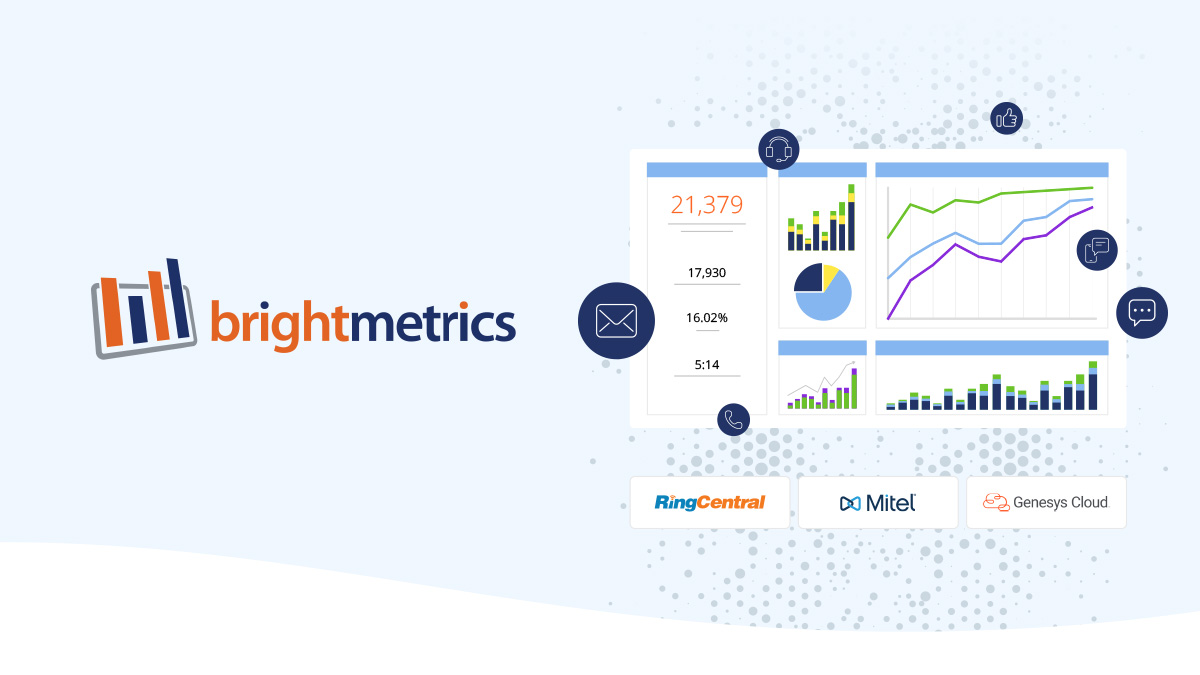Your call center’s success depends on employing agents who can satisfy customer needs effectively and efficiently. Tracking agent performance metrics gives you a data-driven strategy for measuring your agents’ activity and contribution to the customer experience.
Below we’ve listed four metrics that your team leaders may be overlooking, or at the very least, underestimating, for call center agent performance.
1. Average Hold Time
Average hold time measures the average time a call center agent places a customer on hold during an inbound call. Not surprisingly, long hold times can quickly frustrate customers and diminish their experience. When evaluating agent performance, inspect their average hold time. High hold rates could be indications of needing help or further training, having difficulty finding necessary information to assist the customer, or even waiting on slow or limited technology. Some hold time is understandable, but consistently high hold rates should be evaluated.
Hold times contribute to the overall Average Handle Time of interactions with customers, which is an important KPI when assessing the center’s operational performance. High hold rates can disrupt a call center manager’s ability to staff appropriately and successfully develop agent schedules and forecasts.
2. Answer Rate
Answer rate is the percentage of calls an agent answers out of the total number of calls they are presented. Contributing to the overall service level of the call center, this metric focuses on an agent’s accessibility and how they compare to their fellow team members. An agent’s accessibility does not necessarily mean that they are effectively resolving the customer issue in a timely or satisfactory manner. However, answer rates do offer insight into agent activity. Agents dawdling, or doing other busy work, causing delays in answering inbound customer calls, reveal opportunities for improvement.

3. Average After-Call Work Time (ACW)
A call center agent’s work rarely ends after disconnecting with a customer. They might need to complete fields about why the customer called, how they handled the issue, and whether a manager needs to contact the customer for further assistance. After-call work (ACW) also includes the time agents might need to take a breath, refocus, and accept the next incoming call.
By monitoring ACW, team leaders can pinpoint employees who finish post-call work unusually fast or slowly. You might learn that someone has found a good strategy to complete tasks more efficiently than others. Or extremely short ACW times could also mean that your agents aren’t taking detailed notes or completing all the after-call tasks. You may also discover that some agents fumble with post-call tasks.
Excessively long ACWs could indicate agents are taking too long to input information or even purposely avoiding taking customer calls. Reconsidering your approach to post-call work can help lower averages. Automating some aspects of post-call work or retraining agents to work more efficiently are good areas to evaluate regularly.
4. Transfer Rate
Call center transfer rate refers to the percentage of calls that an agent transfers to someone else within the organization out of the total number of calls that the agent is presented. Most call transfers happen because the answering agent can’t fulfill the customer’s request. Perhaps the agent doesn’t have the proper training or access to the tools needed to satisfy the caller.
Knowing your call center’s average transfer rate gives management a metric for evaluating individual agents. Does someone have a transfer rate much higher than the average? You can investigate to determine why that agent transfers so many calls. They might not have the right training to address the needs of calls directed to their department. Using an agent’s transfer rate compared to average handle time is also a useful way of evaluating agent productivity.
A high transfer rate combined with a low average handle time could show that an agent is cherry picking calls and transferring them to other teams rather than assisting the customer. Or, both a high transfer rate and a high average handle time could be indications of a struggling agent who needs more coaching.
Discover How Brightmetrics Can Help
Brightmetrics gives your team the ease and flexibility to slice and dice your call center data to better understand your agents’ strengths and opportunities for improvement. With both historical and real-time dashboards, our drag-and-drop tools help visualize performance metrics to better strategize and improve your agent and customer experience in just a few clicks.




